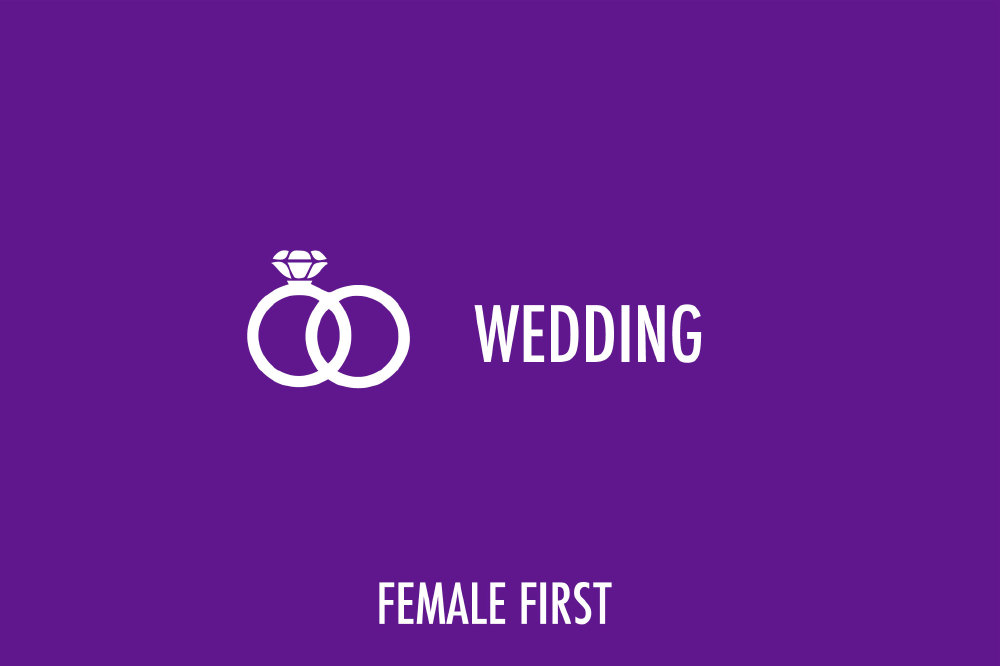Cash strapped grooms are ignoring the age old tradition of splashing out three months’ salary on an engagement ring and are now spending an average of just two weeks according to a new study.

Weddings on Female First
The findings by online retailer Pixmania.com, who has just launched its own jewellery brand Rose & Kara, reveal that of the 70 per cent of men earning an average salary of between £20,000 - £30,000 a year, the majority (80 per cent) spent an average of £729 on an engagement ring – or the equivalent of just two weeks’ salary, after tax.
It leaves their brides in waiting approximately £5,000 short of the three month’s wages tradition commands.
Surprisingly less than 1 per cent of those questioned said they spent more than one month’s salary.
Even millionaire movie star Brad Pitt, who reportedly earned over 22 million dollars (£13,640,000) from Moneyball and Tree of Life last year, only spent $250,000 (£155,000) on the self-designed sparkler he gave Angelina Jolie, for him it was just over four days’ pay and only 1 per cent of his salary from these two films.
The study revealed that even girls who have hooked an above average earner aren’t likely to be sporting a much bigger rock. Of the 15 per cent of men questioned earning between £50,000 - £70,000 a year, the average spent on an engagement ring was £1,624. It is equivalent to between 10 – 13 days salary, after tax.
In what it likely to come as a bitter disappointment to dewy-eyed-brides-to-be across the country none of the men questioned had invested a full three months’ earnings. Even those on salaries of £100,000 plus revealed they had spent on average £3,000 on a ring, equivalent to 12 days.
The findings are in sharp contrast to free -spending celebrities such as Jay-Z who bought one of the most expensive engagement rings in history for singer Beyoncé Knowles. It contains a white diamond with 18 carats and is believed to have cost as much as of $5M (£3,100,000).
The most expensive engagement ring ever sold belonged to the actress Elizabeth Taylor, whose 33 carat diamond ring from fellow film star Richard Burton fetched $8,818,500 (£5,467,835) at New York auction house Christies last year.
Pixmania.com questioned over 700 soon-to-be and recently engaged British men after regularly selling out of low-priced engagement rings from a new range of jewellery on its Rose & Kara website.
Pressure on disposable incomes was given as the most common reason behind the trend, with over half (55 per cent) revealing they struggled to put aside enough money each month. Two thirds (67 per cent) of those questioned cited that they just didn’t have enough to spend on expensive luxury items.
The cost of the wedding itself is also a major factor, with four out of ten saying they couldn’t afford to spend lavishly on the ring and the wedding - the average cost for UK ceremonies is now a staggering £18,500.
The survey comes as a rise in fees by the Church of England is expected to push up the cost of a church wedding by 40 per cent from £296 to £415 by the end of 2012.
12 per cent of those questioned confessed they had also been forced to spend less after having to dip into their savings in the last 12 months.
But the study also revealed however that it’s not all about the recession. Nearly a quarter (24 per cent) of those questioned flatly refused to consider spending the full three months, claiming ‘they would never in any circumstances spend any more on an engagement ring.
Not having to reveal the actual cost of the ring was also cited as a popular reason for not spending any more on the ring. 20 per cent per cent said they would be likely to say the ring cost more than it actually did, if asked by their fiancés.
Ulric Jerome, Executive Director at Pixmania.com, says: “They say you can’t put a price on love and it certainly seems that British blokes have adopted that approach wholeheartedly. We have engagement rings up to the value of £4,000 on the site but it’s the ones priced around £300 that consistently sell-out. But girls shouldn’t worry – a diamond will always have a sparkle.”
The tradition of spending three month’s wage on an engagement ring dates back to a marketing campaign run by diamond company DeBeers during the 1940s. 70 years on and diamonds still dominate the wish list for brides to be but it seems that men no longer feel the need to splash so much cash.
Carl Chart, an HR manager who got engaged six months ago, said “I spent almost a fortnight’s wages on the engagement ring for my fiancé - I think only the privileged, the rich or the living at home can ever live up to the old adage that you need to spend three month’s wages on the ring. The wedding is expensive enough without spending huge amounts on an engagement ring.”
Tagged in Angelina Jolie Brad Pitt Elizabeth Taylor Home Jay-Z Richard Burton England relationships Rings Free Common Engagement

